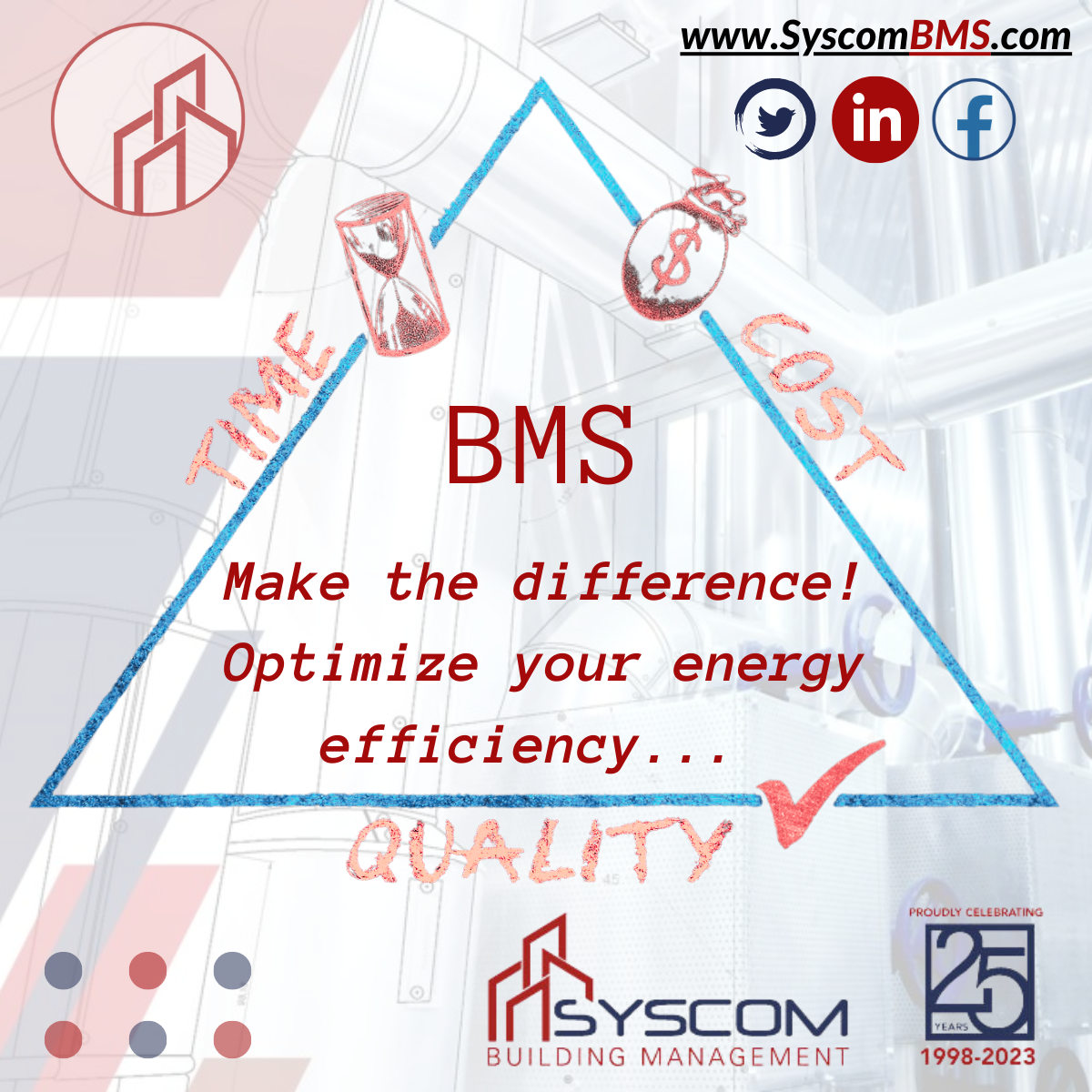
Optimizing Energy Efficiency: How Building Management Systems Can Make a Difference
As businesses and commercial properties continue to expand, the need for an effective and efficient building management system becomes more and more important. Building management systems, also known as BMS, are designed to help facility managers and building owners maintain a comfortable and safe environment for occupants while minimizing energy usage and costs. With the advancement of technology, these systems have become more sophisticated, offering a range of features to help control and monitor various building systems, including HVAC, lighting, security, and more. In this blog post, we will explore the basics of building management systems, including what they are, how they work, and the benefits they can offer your facility. Whether you are new to building management systems or looking to upgrade your existing system, this guide will provide you with the information you need to make informed decisions that can help improve the efficiency and effectiveness of your facility management.
1. What are the 3 basic types of building management systems?
The first system of building management systems is the HVAC (heating, ventilation, and air conditioning) system, which helps regulate indoor temperature and air quality. This system controls the temperature by heating or cooling the air as per the requirement, and also regulates the flow of fresh air inside the building. However, with advancements in technology, the HVAC system has become much more automated than ever before. The modern HVAC systems are equipped with auto systems that can automatically adjust the temperature and airflow according to your preferences. This not only increases the efficiency of the system but also makes it convenient for the building occupants to have a consistent and comfortable indoor environment. The auto system feature ensures that you don’t need to worry about regulating temperature and air quality manually, which is a great relief for facility managers.

The importance of building management systems cannot be overstated, given their crucial role in enhancing energy efficiency and occupant comfort in any building. One of the key components of these systems is the lighting system, which is responsible for regulating the brightness and timing of lighting fixtures. This not only helps to conserve energy but also plays a critical role in ensuring that occupants are comfortable. One of the leading providers of building management systems is Syscom, a company that has built a solid reputation for delivering cutting-edge solutions that help clients to optimize their energy use and improve overall efficiency. With Syscom’s expertise, building owners can rest assured that their building systems are in good hands.
2. Benefits of Optimizing Energy Efficiency
Lowered Costs: Buildings that optimize their energy efficiency can lead to a substantial cost savings over time. A building-wide energy management system can monitor and adjust energy usage, leading to reduced energy bills. In addition to monitoring and adjusting energy usage, automated building management systems can provide owners and operators with valuable insights into their building’s operations. For instance, auto-alerts can notify facility managers when building equipment requires maintenance or is in need of repair, ensuring timely repairs and limiting potential downtime. Through the use of automated building management systems, building owners can make data-driven decisions that result in improved building performance, enhanced energy efficiency, and reduced operating costs. Automation is the key to efficient building management systems, and the benefits of automation are vast and far-reaching.

Thereafter, investing in a Building Management System can lead to increased comfort within the building resulting from improved HVAC systems. This can promote healthier and more comfortable occupants as the temperatures will be regulated and air quality improved. With this advanced technology, BMS provides an ideal solution for any manager looking to upgrade their buildings.
3. Adopting Building Management Systems
One of the most critical aspects of any building management system is the ability to maintain a trustworthy system. This trustworthiness comes from the assurance that the system accurately monitors and controls energy usage within a building to increase energy efficiency. By using a building automation system, building managers can effectively reduce energy waste and improve operational efficiency, helping to meet sustainability goals while saving energy costs. With the ability to monitor and identify energy usage, a trustworthy building management system can provide significant value to any organization. As a result, more and more facility owners are recognizing the importance of implementing a trustworthy building management system.
Besides providing the efficient, economic and reliable energy management solutions that building management systems offer, they also contribute to increasing occupant comfort through optimal temperature and lighting levels. This provides tenants with a trustworthy environment of high-quality, leading to higher tenant satisfaction which in turn can add to the value of the property over time as word spreads about its superior standards.

4. The Role of Automation in Energy Efficiency
Automated building management systems have become increasingly popular for property owners and tenants who want to gain control over their utility usage. Property managers understand that energy consumption can be a significant expense, and in some cases, tenants are responsible for paying for their energy usage. Therefore, the implementation of building management systems could provide numerous benefits, including control over energy usage. These systems are integrated with several different control options to regulate building systems, such as heating and cooling, in accordance with weather data and occupancy. It allows for greater energy efficiency, reducing waste and lowering overall utility costs. As a result, the adoption of automated building management systems can be an asset to property managers, building owners, and sustainability initiatives.
All in all, building management systems can provide a comprehensive solution for improving energy efficiency through automation. By providing greater transparency into the operational data points, automated systems enable building managers to identify areas which can be optimized for energy savings. Informed decisions about maintenance routines and other improvements can help reduce energy costs and environmental impact.
5. Auto Optimization features in building management systems
Building management systems (BMS) can help optimize energy efficiency by automating the processes of detecting, analyzing, and controlling energy usage in a building. By leveraging automated controls, BMS can continuously monitor energy consumption to identify areas of waste and make adjustments to reduce it. Additionally, BMS can be customized to react to changes in the environment or occupancy levels, allowing it to respond to changing needs quickly and effectively. Furthermore, BMS provide users with easy access to data and analytics to help them make better decisions about energy usage. With the help of these features, BMS can significantly reduce energy consumption and costs, while also helping buildings remain environmentally friendly.
By automatically analyzing data from the building’s sensors, these features can make adjustments to the system, improving energy efficiency and reducing costs. This means that organizations no longer have to rely on human intervention to optimize their building’s performance. temperature of your room according to your preferences, turn off the lights when you leave the room, and even answer your questions. Sounds like something out of a sci-fi movie, right? Well, not anymore! Thanks to the advancements in technology, building automation has become a reality.
By investing in a BMS, businesses can save money on energy costs, helping them reach their financial goals while also becoming more sustainable.

6. Challenges Faced When Implementing Building Management Systems
One of the primary challenges of implementing a building management system is cost. These systems can be expensive to install and maintain, making it difficult for some organizations to justify the investment. However, with the introduction of auto-optimization features, the operating costs of these systems have significantly reduced. This has made building management systems more accessible to organizations who were previously hesitant to invest. Auto-optimization features automatically analyze data from the building’s sensors, making adjustments to the system to improve energy efficiency and reduce costs. In addition, these systems can also automate tasks such as scheduling maintenance, reducing the workload for building managers. By implementing a building management system with auto-optimization features, organizations can improve their operational efficiency while reducing the overall cost of implementation and maintenance.
We all know that implementing a building management system can be expensive. But what if we told you that there is a way to make it more cost-effective? Enter auto-optimization features!
7. Identifying Opportunities for Improved Efficiency
Implementing data analytics can provide valuable insights into building performance and energy usage patterns. This is especially important for building management systems (BMS), where optimizing energy usage is crucial to operational efficiency and cost savings. By utilizing data analytics tools, BMS operators can identify areas where energy consumption can be reduced without compromising comfort or safety. Additionally, data analytics can enable predictive maintenance, alerting operators to potential equipment failures before they occur and reducing downtime. Overall, the use of data analytics in building management systems can greatly benefit building operators and owners by improving energy efficiency, reducing costs, and preventing equipment failures.

Conducting an energy audit can help identify areas where building systems may be operating inefficiently, leading to unnecessary energy waste and high utility bills. One way to address this issue is by implementing building management systems that enable optimisation of energy consumption. With these systems in place, building owners and managers can monitor and control various components such as HVAC, lighting, and water usage, among others. This level of automation not only helps reduce energy consumption but also enhances occupant comfort by ensuring that each aspect of the building operates optimally. Additionally, with the data collected from building management systems, owners and managers can identify trends and patterns to further improve the optimisation of their building’s energy consumption. Overall, investing in a building management system with optimisation features can provide significant cost savings and environmental benefits in the long run.
Finally, investing in building management systems is a great way to optimise energy usage while creating an environment that is comfortable and productive for occupants. Smart building technology such as automated lighting and HVAC controls can lead to significant savings and increased comfort, allowing organizations to achieve greater efficiency.




